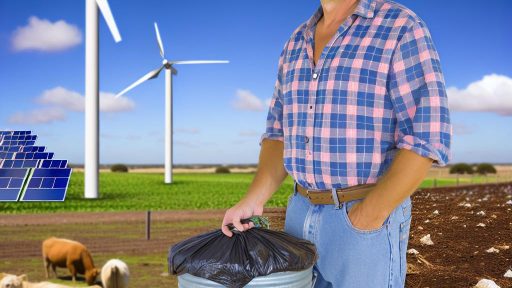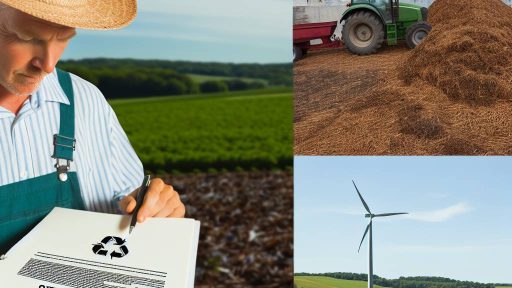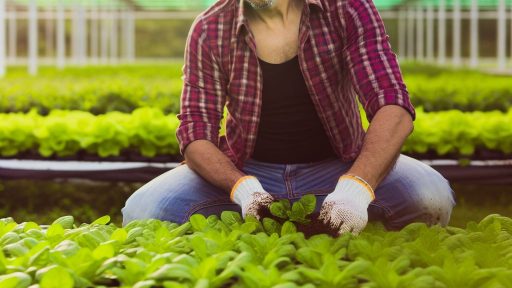Introduction to Precision Agriculture
Definition and Importance
Precision agriculture refers to farming practices that use technology to enhance crop yields.
This approach integrates data analysis to optimize farming operations.
Farmers utilize tools like GPS, sensors, and drones for accurate information.
By monitoring fields more closely, they can make informed decisions.
As a result, they improve resource management and reduce waste.
Moreover, precision agriculture promotes sustainable farming practices.
This method allows farmers to apply the right amount of inputs precisely when needed.
Consequently, it minimizes environmental impact while maximizing productivity.
Research indicates that precision agriculture can significantly boost profitability.
Farmers are increasingly adopting these techniques to remain competitive.
Furthermore, technology advancements continue to enhance data collection and analysis.
In summary, precision agriculture plays a vital role in modern farming.
Its implementation drives efficiency and sustainability in agricultural practices.
Key Technologies in Precision Agriculture
GPS Technology
GPS technology plays a pivotal role in precision agriculture.
It provides farmers with accurate location data for their fields.
Transform Your Agribusiness
Unlock your farm's potential with expert advice tailored to your needs. Get actionable steps that drive real results.
Get StartedFarmers utilize GPS to map out their land precisely.
This mapping helps in planning field activities effectively.
Furthermore, GPS enables farmers to monitor crop health remotely.
Real-time tracking improves resource management on the farm.
As a result, farmers can reduce waste and optimize yields.
Drones in Agriculture
Drones have revolutionized the way farmers assess their crops.
Using drones allows for quick aerial surveys of vast fields.
This technology captures high-resolution images for analysis.
Drones help in identifying areas that need attention.
With this information, farmers can apply inputs more efficiently.
Moreover, drones facilitate crop health monitoring over time.
Consequently, farmers can make data-driven decisions.
IoT Sensors
IoT sensors collect real-time data from the field.
These sensors measure soil moisture, temperature, and nutrient levels.
Farmers can analyze this data to make informed decisions.
This technology helps in accurate irrigation scheduling.
Moreover, it allows farmers to monitor environmental conditions continuously.
Real-time data from IoT sensors enhances yield forecasting.
Overall, they contribute significantly to resource efficiency.
How Precision Agriculture Collects and Analyzes Data for Better Decision Making
Utilizing Advanced Technologies
Farmers increasingly use drones to capture high-resolution images of crops.
These images reveal variations in plant health and irrigation needs.
Additionally, sensors in the field provide real-time data on soil conditions.
This combination allows for targeted interventions when necessary.
Data Collection Methods
Precision agriculture employs various techniques to gather data.
Showcase Your Farming Business
Publish your professional farming services profile on our blog for a one-time fee of $200 and reach a dedicated audience of farmers and agribusiness owners.
Publish Your ProfileFor example, farmers use satellite imagery for large-scale assessments.
Moreover, soil sampling provides detailed insights into nutrient levels.
Farmers often rely on weather stations to monitor environmental factors.
Data Analysis Techniques
After collecting data, farmers analyze it for actionable insights.
Data analytics software helps identify trends and patterns in the data.
Furthermore, machine learning algorithms can predict future outcomes.
Such analyses inform better planting and harvesting decisions.
Improving Decision Making
With precise data, farmers can optimize resource usage effectively.
This optimization reduces costs while enhancing yield potential.
Targeted irrigation strategies, for instance, conserve water and energy.
Consequently, this leads to more sustainable farming practices.
Case Studies and Success Stories
Several farms have reaped benefits from adopting precision agriculture.
A family-owned farm in Illinois saw a 30% increase in corn yield.
They used targeted fertilization based on soil data analysis.
In another case, a vineyard in California reduced water usage by 40%.
This result was achieved through smart irrigation technologies.
See Related Content: Water Management Strategies in Agroforestry for US Farmers
Enhancing Crop Yield
Overview of Precision Agriculture
Precision agriculture uses technology to optimize farming practices.
It involves mapping fields and monitoring crop health.
This approach leads to more efficient resource use.
Farmers can make data-driven decisions for better yields.
Case Study: Green Valley Farms
Green Valley Farms implemented precision agriculture in 2021.
They utilized soil sensors to assess nutrient levels.
This technology helped them apply fertilizers more effectively.
As a result, their crop yield increased by 25% within a year.
Case Study: Hilltop Orchards
Hilltop Orchards adopted drone technology for monitoring plants.
The drones provided real-time images of crop health.
This allowed for timely interventions for pest control.
Consequently, their apple yield rose by 30% during the growing season.
Case Study: Lakeside Soybean Farm
Lakeside Soybean Farm used variable-rate planting techniques.
They adjusted seed rates based on soil variability.
This methodology led to more uniform crop stands.
Overall, they achieved a 20% increase in their soybean production.
Benefits of Precision Agriculture
Precision agriculture enhances efficiency in farming operations.
It reduces waste through targeted inputs like water and fertilizers.
Farmers experience increased profitability from higher yields.
Moreover, it helps in sustainable resource management.
Future Prospects
The future of precision agriculture looks promising.
Advancements in technology continuously improve farming methods.
As more farmers adopt these practices, crop yields will further increase.
Showcase Your Farming Business
Publish your professional farming services profile on our blog for a one-time fee of $200 and reach a dedicated audience of farmers and agribusiness owners.
Publish Your ProfileThis evolution will significantly contribute to global food security.
You Might Also Like: Renewable Resource Utilization for Irrigation Efficiency
Cost-Benefit Analysis: Investing in Precision Agriculture Technologies
Understanding Initial Investment Costs
Precision agriculture technologies require significant initial investments.
Farmers must evaluate the costs of machinery and software.
Additionally, training employees represents another important expense.
It is crucial to calculate the total investment before proceeding.
Potential Increases in Crop Yield
Investing in precision agriculture can yield significant crop increases.
Technologies such as satellite imagery provide critical insights.
Data collected allows for better decision-making on planting and harvesting.
As a result, farmers can optimize water and fertilizer usage.
Moreover, targeted application decreases waste and enhances productivity.
Enhancing Farm Profitability
Increased efficiency translates to higher profitability for farmers.
Farmers who adopt precision techniques often see lower operational costs.
These techniques help to reduce labor and resource expenditures.
For instance, smart irrigation systems minimize water usage.
This not only saves money but also conserves vital resources.
Return on Investment Over Time
The long-term benefits often outweigh the initial costs.
Farmers can expect increased yields over multiple growing seasons.
Moreover, improved crop quality can lead to better market prices.
Many farmers report positive returns within a few years of investment.
Risks and Considerations
Despite potential benefits, risks exist with any technology investment.
Market volatility can affect profitability even with efficient practices.
Furthermore, technical failures or data inaccuracies may pose challenges.
Farmers should weigh these risks against the potential rewards.
Making Informed Decisions
Conducting a thorough cost-benefit analysis is essential.
Farmers must analyze their unique circumstances and resources.
Consulting with experts can provide valuable insights into technology options.
Additionally, attending workshops can inform farmers about current trends.
Ultimately, informed decisions lead to successful investments.
Explore Further: How Wind Turbines Can Improve Farm Energy Efficiency

Impact of Precision Agriculture on Sustainable Farming Practices
Understanding Precision Agriculture
Precision agriculture uses technology to improve farming practices.
This approach enables farmers to monitor and manage field variability.
Through data analysis, farmers can apply inputs more accurately.
Consequently, they reduce waste and improve crop quality.
Furthermore, precision agriculture enhances resource efficiency.
Enhancing Soil Health
Healthy soil is fundamental for sustainable agriculture.
Precision agriculture aids in soil health monitoring.
Farmers can assess soil moisture and nutrient levels more accurately.
This information drives better fertilization practices.
As a result, crops receive optimal nutrients for growth.
Showcase Your Farming Business
Publish your professional farming services profile on our blog for a one-time fee of $200 and reach a dedicated audience of farmers and agribusiness owners.
Publish Your ProfileWater Management Improvements
Effective water management is crucial for sustainable farming.
Precision irrigation systems help in this regard.
Farmers can target specific areas that require moisture.
This leads to significant water savings and reduced run-off.
Moreover, it minimizes stress on water resources.
Integrating Pest and Disease Management
Precision agriculture contributes to pest and disease control.
Farmers can utilize sensors to detect infestations early.
Timely interventions prevent widespread damage.
Additionally, targeted applications reduce chemical usage.
This approach promotes ecological health and safety.
Data-Driven Decision Making
Data is a cornerstone of precision agriculture.
Farmers analyze data for informed decision-making.
This process enhances planning and operational efficiency.
To illustrate, precision mapping indicates optimal planting schedules.
Consequently, it increases crop yield per acre.
Long-Term Sustainability Goals
Ultimately, precision agriculture aligns with sustainability goals.
It supports initiatives for reducing carbon footprints.
Farmers adopting these practices enjoy economic benefits over time.
Additionally, they contribute to global food security.
In essence, precision agriculture fosters a resilient agricultural system.
Discover More: Balancing Soil Nutrients for Sustainable and Profitable Farming
Challenges and Limitations of Implementing Precision Agriculture Systems
High Initial Investment Costs
Farmers face significant costs when adopting precision agriculture technologies.
High-tech equipment often requires a substantial upfront investment.
Additionally, the maintenance and operation of these systems can be costly.
Consequently, many smaller farms struggle to adopt these advanced technologies.
Technological Complexity
The complexity of precision agriculture systems can be overwhelming.
Farmers may need extensive training to effectively use these tools.
Moreover, integrating various technologies can pose compatibility challenges.
This complexity may lead to reluctance in adopting new practices.
Data Management and Interpretation
Collecting data is only the first step in precision agriculture.
Farmers often struggle to manage and analyze vast amounts of data.
Interpreting this data into actionable insights can be daunting.
Consequently, many producers may not fully utilize the data collected.
Variable Environmental Conditions
Precision agriculture systems may not account for all environmental variations.
Unpredictable weather patterns can affect crop yield despite advanced techniques.
This variability can undermine the efficacy of precision methods.
Farmers must remain adaptable to these unpredictable conditions.
Access to Technology
Access to precision agriculture technology can be limited in some regions.
Rural areas may lack the necessary infrastructure to support these systems.
As a result, farmers in these regions may face disadvantages.
Showcase Your Farming Business
Publish your professional farming services profile on our blog for a one-time fee of $200 and reach a dedicated audience of farmers and agribusiness owners.
Publish Your ProfileThis access gap can exacerbate inequalities in agricultural productivity.
Regulatory and Policy Challenges
Complex regulations can hinder the adoption of precision agriculture.
Farmers often navigate a maze of local, state, and federal policies.
These regulations can affect the implementation of new technologies.
Alignment with environmental guidelines can also be challenging.
Future Trends in Precision Agriculture
Advancements in Sensor Technologies
New sensor technologies are transforming precision agriculture practices.
These sensors collect critical data in real-time on soil health.
Moreover, they monitor water levels and nutrient availability effectively.
Farmers can respond quickly to changing conditions using this data.
For instance, sensors for soil moisture help optimize irrigation schedules.
Integration of Artificial Intelligence
Artificial intelligence (AI) is playing a significant role in agriculture.
AI algorithms analyze vast amounts of agricultural data quickly.
This improves decision-making regarding planting, pest control, and harvest timing.
Furthermore, AI-driven solutions enhance predictive analytics for crop yield.
Farmers can thus optimize inputs and outputs more effectively.
Blockchain for Supply Chain Transparency
Blockchain technology is gaining popularity in agriculture.
It offers transparency throughout the supply chain process.
Farmers can trace their products from field to consumer reliably.
This builds trust with consumers and improves market access.
Additionally, it helps in verifying organic or sustainable practices.
Use of Drones and Aerial Imagery
Drones are becoming essential tools in modern farming.
They provide aerial imagery for crop health monitoring and mapping.
This technology identifies issues like pest infestations efficiently.
Farmers can apply targeted treatment, reducing waste and increasing yields.
Moreover, drone data supports precise irrigation and fertilization efforts.
Collaboration with Tech Companies
Collaboration between farmers and tech companies is boosting innovation.
Startups are developing new tools tailored to specific agricultural needs.
For example, data analytics platforms enhance farm management capabilities.
These partnerships often lead to groundbreaking solutions and efficiencies.
Farmers benefit from customized technology, making their operations more efficient.
Additional Resources
Precision Agriculture: Benefits and Challenges for Technology …




